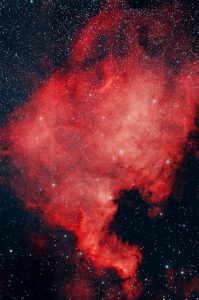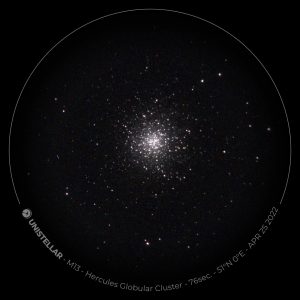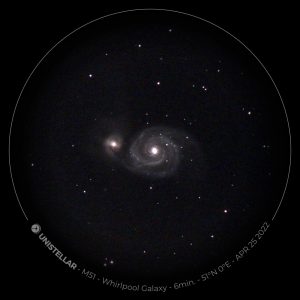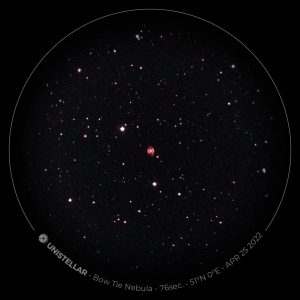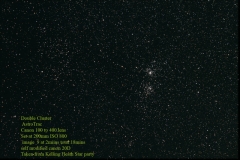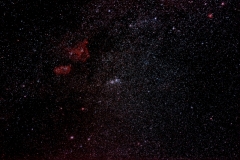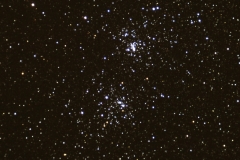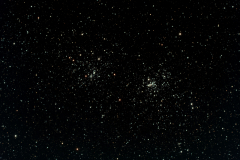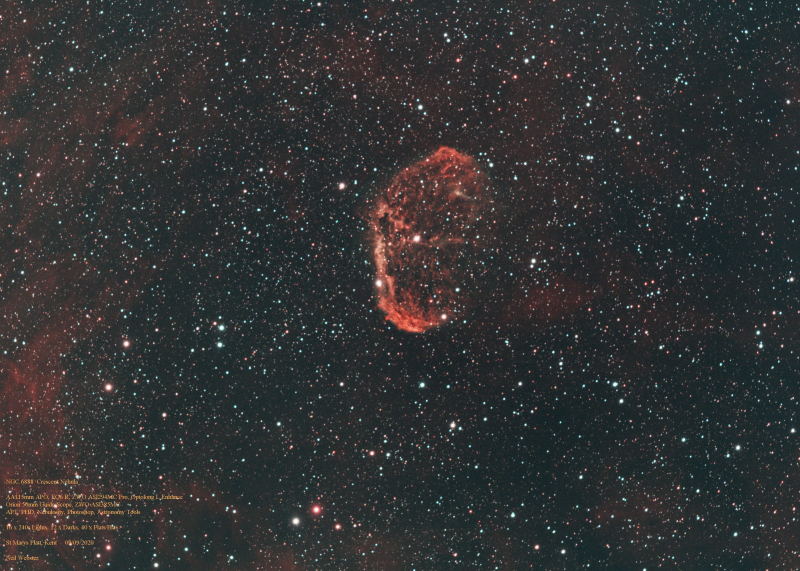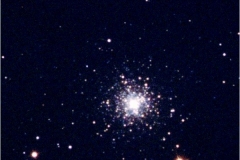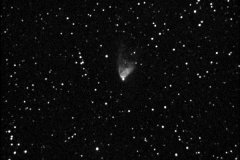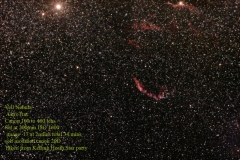[et_pb_section fb_built="1" _builder_version="3.22"][et_pb_row _builder_version="3.25" background_size="initial" background_position="top_left" background_repeat="repeat"][et_pb_column type="4_4" _builder_version="3.25" custom_padding="|||" custom_padding__hover="|||"][et_pb_text _builder_version="3.27.4"]
The Rosette is a popular object for imagers, the complex has the following NGC designations:
- NGC 2237 - Part of the nebulous region (Usually used to denote whole nebula)
- NGC 2238 - Part of the nebulous region
- NGC 2239 - Part of the nebulous region (Discovered by John Herschel)
- NGC 2244 - The open cluster within the nebula (Discovered by John Flamsteed in 1690)
- NGC 2246 - Part of the nebulous region
The cluster and nebula lie at a distance of some 5,200 light years from Earth (although estimates of the distance vary considerably) and measure roughly 130 light years in diameter. The radiation from the young stars excite the atoms in the nebula, causing them to emit radiation themselves producing the emission nebula we see. The mass of the nebula is estimated to be around 10,000 solar masses.
It is believed that stellar winds from a group of O and B stars are exerting pressure on interstellar clouds to cause compression, followed by star formation in the nebula. This star formation is currently still ongoing.
A survey of the nebula with the Chandra X-ray Observatory in 2001 has revealed the presence of very hot, young stars at the core of the Rosette Nebula. These stars have heated the surrounding gas to a temperature in the order of 6 million kelvins causing them to emit copious amounts of X-rays.
[/et_pb_text][/et_pb_column][/et_pb_row][et_pb_row _builder_version="3.25" background_size="initial" background_position="top_left" background_repeat="repeat" column_structure="1_4,3_4"][et_pb_column type="1_4" _builder_version="3.25" custom_padding="|||" custom_padding__hover="|||"][et_pb_text admin_label="BT Image" _builder_version="3.27.4"]
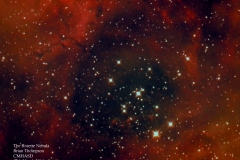
[/et_pb_text][/et_pb_column][et_pb_column type="3_4" _builder_version="3.25" custom_padding="|||" custom_padding__hover="|||"][et_pb_text admin_label="Brian Thompson Text" _builder_version="3.27.4"]
Image by Brian Thompson
17th March 2016
10" Newtonian, Mono ATIK 383L, filters, 9 x 5 min exposures
[/et_pb_text][/et_pb_column][/et_pb_row][et_pb_row _builder_version="3.25" background_size="initial" background_position="top_left" background_repeat="repeat" column_structure="1_4,3_4"][et_pb_column type="1_4" _builder_version="3.25" custom_padding="|||" custom_padding__hover="|||"][et_pb_text admin_label="JT Image" _builder_version="3.27.4"]
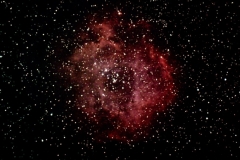
[/et_pb_text][/et_pb_column][et_pb_column type="3_4" _builder_version="3.25" custom_padding="|||" custom_padding__hover="|||"][et_pb_text admin_label="Julian Tworek Text" _builder_version="3.27.4"]
Image by Julian Tworek using a DSLR and unknown telescope.
[/et_pb_text][/et_pb_column][/et_pb_row][et_pb_row _builder_version="3.25" background_size="initial" background_position="top_left" background_repeat="repeat" column_structure="1_4,3_4"][et_pb_column type="1_4" _builder_version="3.25" custom_padding="|||" custom_padding__hover="|||"][et_pb_text admin_label="KR Image" _builder_version="3.27.4"]
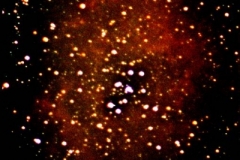
[/et_pb_text][/et_pb_column][et_pb_column type="3_4" _builder_version="3.25" custom_padding="|||" custom_padding__hover="|||"][et_pb_text admin_label="Keith Rickard Text" _builder_version="3.27.4"]
Imaged by Keith Rickard
SBIG ST-7XME CCD camera with a 200mm telephoto lens, F9, 3 x 2min images in red, green and blue and 5 x 2min images in luminance
[/et_pb_text][/et_pb_column][/et_pb_row][et_pb_row _builder_version="3.25" background_size="initial" background_position="top_left" background_repeat="repeat" column_structure="1_4,3_4"][et_pb_column type="1_4" _builder_version="3.25" custom_padding="|||" custom_padding__hover="|||"][et_pb_text admin_label="SD Image" _builder_version="3.27.4"]

[/et_pb_text][/et_pb_column][et_pb_column type="3_4" _builder_version="3.25" custom_padding="|||" custom_padding__hover="|||"][et_pb_text admin_label="SD Text" _builder_version="3.27.4"]
Imaged by Simon Dawes
Imaged on 2019-01-29
I'd taken 2hrs of images but wasn't able to get Deep sky stacker to stack more than 56 minutes.
Taken with a Canon 600D (Full Spectrum Mod) with a CLSCCD filter on a Skywatcher MN190, mounted on an EQ6 Pro
[/et_pb_text][/et_pb_column][/et_pb_row][et_pb_row _builder_version="3.25" background_size="initial" background_position="top_left" background_repeat="repeat" column_structure="1_4,3_4"][et_pb_column type="1_4" _builder_version="3.25" custom_padding="|||" custom_padding__hover="|||"][et_pb_text admin_label="SD Image" _builder_version="3.27.4" z_index_tablet="500"]
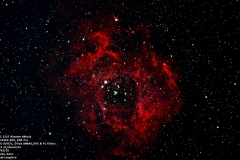
[/et_pb_text][/et_pb_column][et_pb_column type="3_4" _builder_version="3.25" custom_padding="|||" custom_padding__hover="|||"][et_pb_text admin_label="KL Text" _builder_version="3.27.4" z_index_tablet="500"]
Imaged by Kevin Langford
Imaged on 2019-02-254 Hrs of exposures
ES 102ED APO, EQ5 Pro
ZWO ASI071, Orion MMAG, UHC & PL Filter
[/et_pb_text][/et_pb_column][/et_pb_row][et_pb_row _builder_version="4.7.4" _module_preset="default" column_structure="1_4,3_4"][et_pb_column _builder_version="4.7.4" _module_preset="default" type="1_4"][et_pb_text _builder_version="4.7.4" _module_preset="default" admin_label="LS image" hover_enabled="0" sticky_enabled="0"]

[/et_pb_text][/et_pb_column][et_pb_column _builder_version="4.7.4" _module_preset="default" type="3_4"][et_pb_text _builder_version="4.7.4" _module_preset="default" admin_label="LS text" hover_enabled="0" sticky_enabled="0"]
NGC 2244 Rosette Nebula Stack of 59 x 105 Seconds light frames (1 Hour 43 Minutes and 15 Seconds) at ISO 3200
[/et_pb_text][/et_pb_column][/et_pb_row][/et_pb_section]
